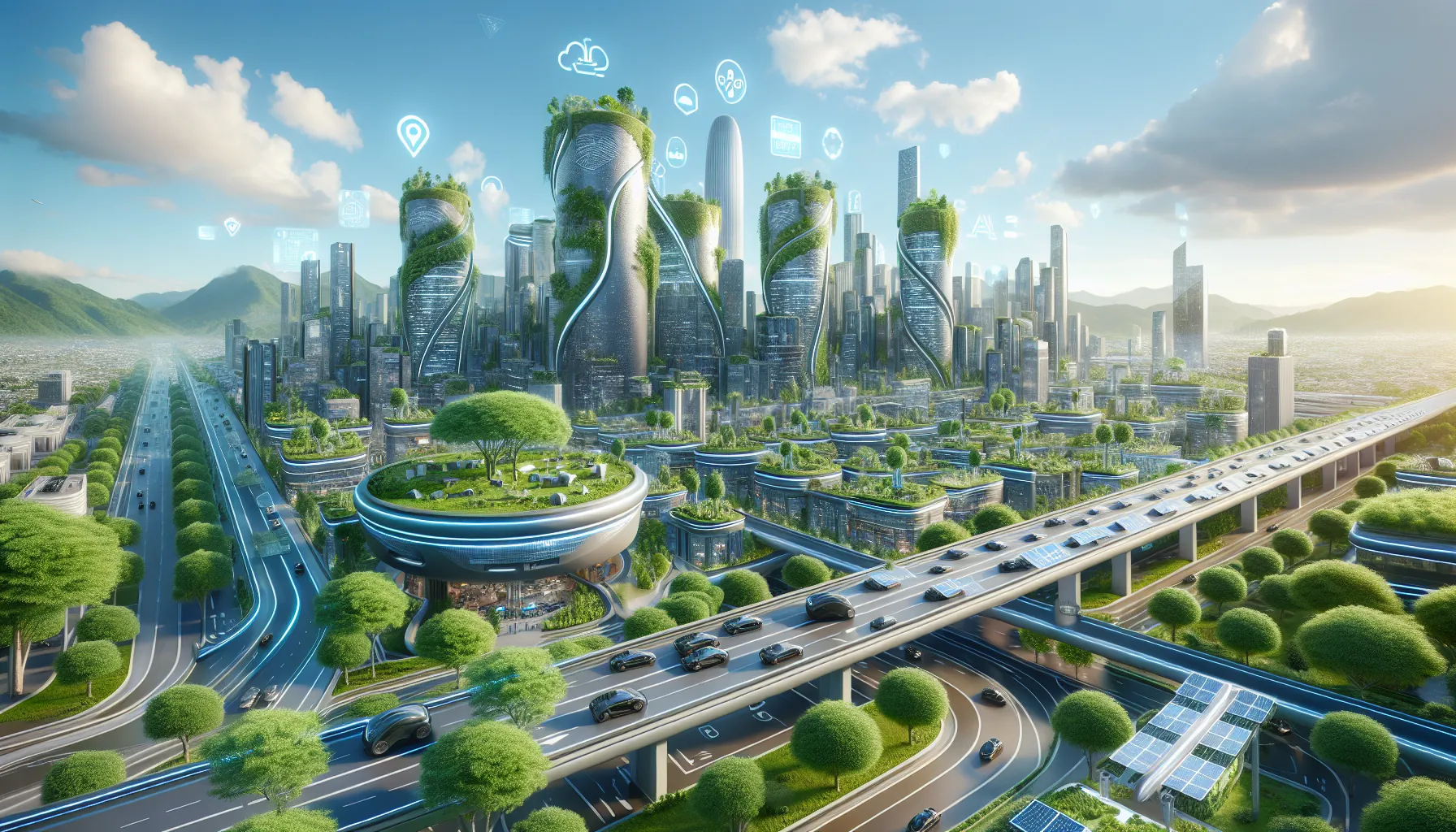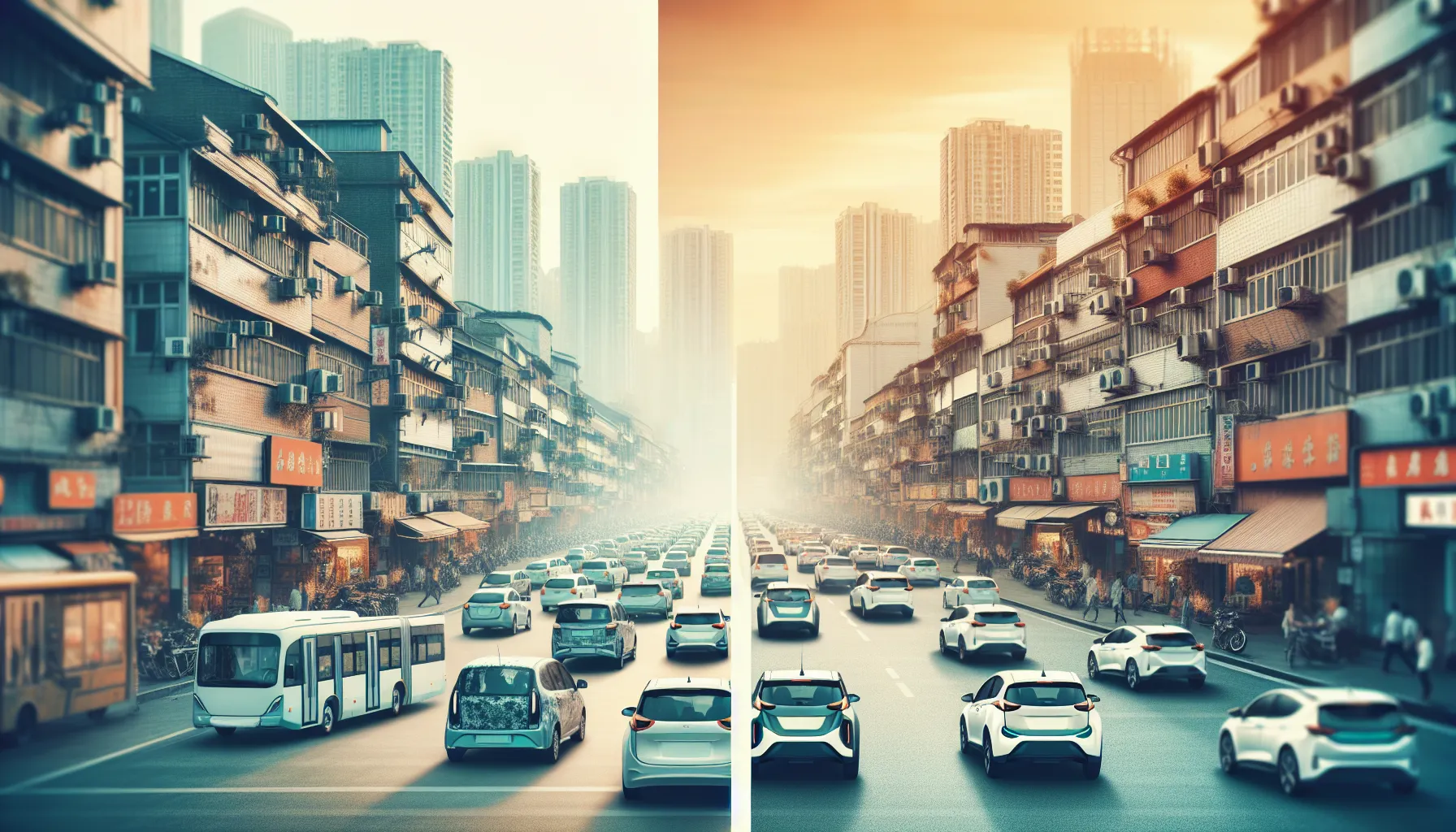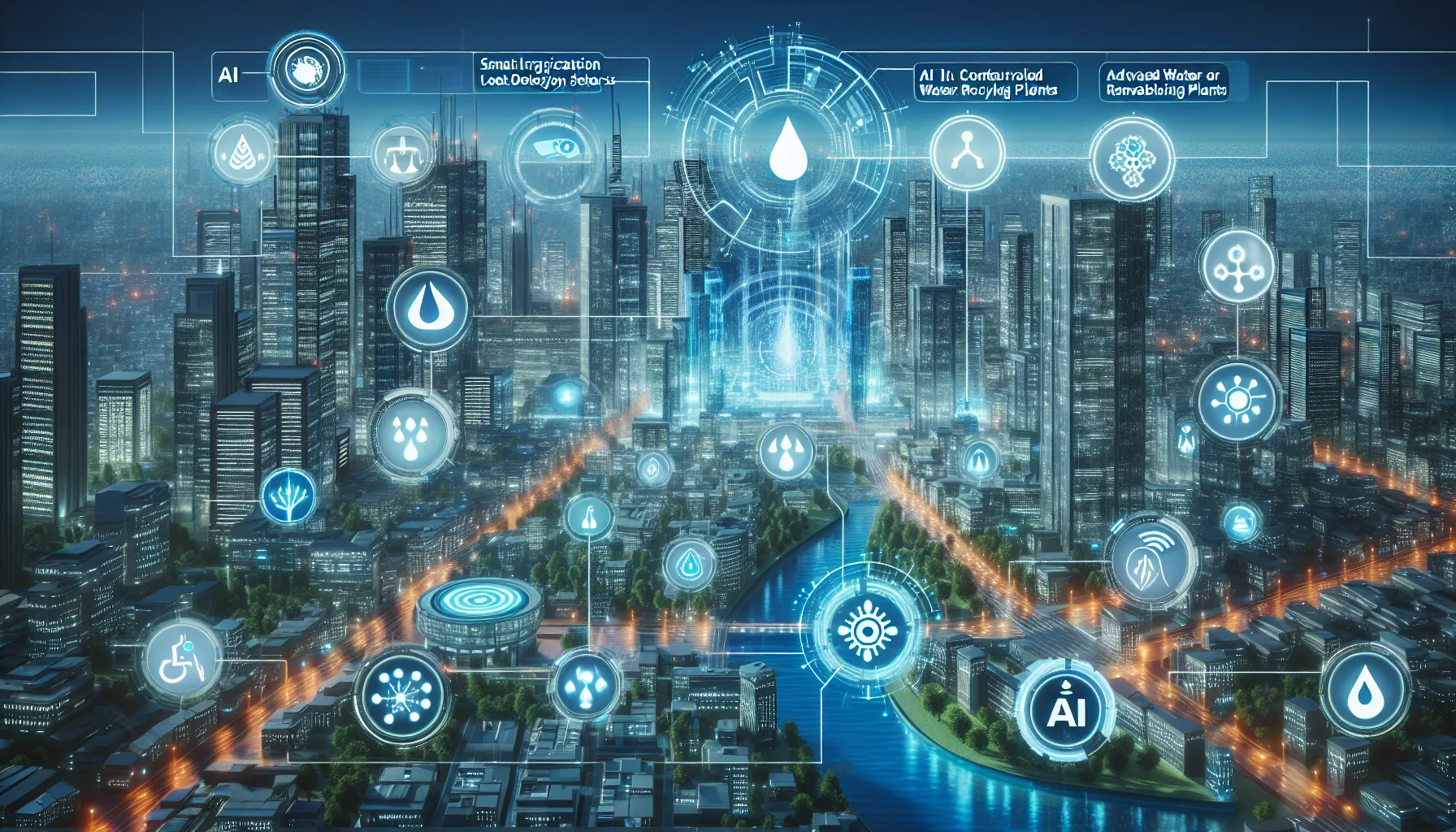In this IELTS Reading practice, we’ll explore the fascinating topic of “The role of AI in reducing pollution levels.” This subject is not only relevant to current environmental concerns but also presents an excellent opportunity to enhance your reading skills for the IELTS exam. Let’s dive into a comprehensive reading test that mirrors the actual IELTS Reading section, complete with passages of varying difficulty, diverse question types, and detailed answers.
Nội dung bài viết
 AI reducing pollution
AI reducing pollution
IELTS Reading Test: The Role of AI in Reducing Pollution Levels
Passage 1 (Easy Text)
Artificial Intelligence: A New Hope for Environmental Protection
In recent years, the world has witnessed a surge in environmental concerns, with pollution levels reaching alarming heights in many urban areas. As traditional methods of combating pollution prove insufficient, scientists and environmentalists are turning to a powerful ally: Artificial Intelligence (AI). This cutting-edge technology offers innovative solutions to monitor, analyze, and mitigate various forms of pollution, providing a ray of hope in the fight against environmental degradation.
One of the most promising applications of AI in pollution reduction is in air quality management. Smart sensors equipped with AI algorithms can continuously monitor air quality in real-time, detecting even minute changes in pollutant levels. These systems can predict pollution hotspots and alert authorities to take preemptive action, such as rerouting traffic or temporarily shutting down polluting industries.
Water pollution, another critical environmental issue, is also being addressed through AI-powered solutions. Machine learning models can analyze satellite imagery and water quality data to identify sources of water contamination. This technology enables faster response times to pollution incidents and helps in developing more effective water treatment strategies.
Furthermore, AI is revolutionizing waste management practices. Intelligent sorting systems use computer vision and robotics to efficiently separate recyclables from general waste, significantly improving recycling rates. AI algorithms can also optimize waste collection routes, reducing the carbon footprint of garbage trucks and improving overall efficiency.
As we move forward, the integration of AI in environmental protection strategies promises to bring about a paradigm shift in how we tackle pollution. By harnessing the power of data analysis and predictive modeling, AI offers us the tools to create cleaner, healthier environments for future generations.
Questions 1-5
Do the following statements agree with the information given in the passage?
Write
TRUE if the statement agrees with the information
FALSE if the statement contradicts the information
NOT GIVEN if there is no information on this
- Traditional methods of fighting pollution have been completely successful.
- AI can predict areas where pollution levels might increase.
- AI-powered sensors can detect small changes in air quality.
- Water pollution can be identified using AI analysis of satellite images.
- AI has completely solved the problem of waste management.
Questions 6-10
Complete the sentences below.
Choose NO MORE THAN TWO WORDS from the passage for each answer.
- AI algorithms in smart sensors can detect even __ changes in pollutant levels.
- Machine learning models can help develop more effective __ strategies for water.
- __ use computer vision and robotics to separate recyclables from general waste.
- AI can optimize __ for garbage trucks, reducing their carbon footprint.
- The integration of AI in environmental protection may bring about a __ in tackling pollution.
Passage 2 (Medium Text)
The Synergy of AI and IoT in Combating Industrial Pollution
The marriage of Artificial Intelligence (AI) and the Internet of Things (IoT) is ushering in a new era of pollution control, particularly in the industrial sector. This symbiotic relationship between smart, connected devices and intelligent algorithms is proving to be a game-changer in monitoring and reducing pollution levels across various industries.
One of the most significant applications of this AI-IoT synergy is in predictive maintenance of industrial equipment. By analyzing data from IoT sensors attached to machinery, AI algorithms can predict when a piece of equipment is likely to malfunction or operate inefficiently. This proactive approach not only prevents unexpected breakdowns but also ensures that machines operate at optimal efficiency, thereby minimizing emissions and waste.
Moreover, AI-powered IoT systems are revolutionizing energy management in factories. These systems can analyze patterns in energy consumption, weather data, and production schedules to optimize energy usage. For instance, they can automatically adjust heating, ventilation, and air conditioning (HVAC) systems based on real-time conditions, significantly reducing energy waste and associated carbon emissions.
In the realm of water pollution control, AI-IoT solutions are making significant strides. Smart water quality monitors equipped with AI can detect pollutants in real-time and predict potential contamination events. This allows for rapid response to pollution incidents and helps industries to maintain compliance with environmental regulations more effectively.
Another promising area is the use of AI in conjunction with IoT devices for atmospheric emissions monitoring. Advanced sensors can continuously measure air quality parameters, while AI algorithms analyze this data to identify pollution sources and predict air quality trends. This information can be used to optimize industrial processes, reducing emissions at the source.
The potential of AI-IoT solutions in pollution control extends beyond individual factories. By aggregating data from multiple sources, these systems can provide a comprehensive view of pollution levels across industrial zones or entire cities. This holistic approach enables policymakers and environmental agencies to make more informed decisions and implement targeted pollution reduction strategies.
However, the implementation of AI-IoT solutions for pollution control is not without challenges. Data privacy concerns, the need for substantial initial investments, and the requirement for specialized skills to manage these systems are some of the hurdles that need to be addressed.
Despite these challenges, the potential benefits of integrating AI and IoT for pollution control are immense. As these technologies continue to evolve and become more accessible, they promise to play a crucial role in creating cleaner, more sustainable industrial practices.
Questions 11-14
Choose the correct letter, A, B, C, or D.
-
What is the main advantage of using AI for predictive maintenance in industries?
A) It reduces the cost of equipment
B) It prevents unexpected breakdowns
C) It increases production speed
D) It improves worker safety -
How do AI-powered IoT systems help in energy management?
A) By replacing old machinery
B) By increasing production output
C) By optimizing energy usage based on various factors
D) By completely automating factory operations -
What role do smart water quality monitors play in pollution control?
A) They clean polluted water
B) They predict potential contamination events
C) They replace traditional water treatment plants
D) They reduce water consumption in industries -
What is mentioned as a challenge in implementing AI-IoT solutions for pollution control?
A) Lack of effective algorithms
B) Resistance from industrial workers
C) Data privacy concerns
D) Limited availability of IoT devices
Questions 15-20
Complete the summary below.
Choose NO MORE THAN TWO WORDS from the passage for each answer.
The combination of AI and IoT is proving effective in controlling industrial pollution. AI algorithms can analyze data from IoT sensors to predict equipment malfunctions, ensuring (15) __ efficiency and reducing emissions. In energy management, these systems can optimize usage by considering factors like weather and production schedules, automatically adjusting (16) __ systems. For water pollution control, (17) __ can detect pollutants in real-time. AI-IoT solutions also monitor (18) __, helping to identify pollution sources and predict trends. This technology allows for a (19) __ to pollution control across large areas. However, implementing these solutions faces challenges such as (20) __ and the need for specialized skills.
Passage 3 (Hard Text)
The Ethical Implications and Future Prospects of AI in Environmental Conservation
The burgeoning role of Artificial Intelligence (AI) in addressing environmental challenges, particularly in pollution reduction, has sparked a complex dialogue about its ethical implications and future trajectory. While the potential of AI to revolutionize environmental conservation is undeniable, it also raises profound questions about data privacy, algorithmic bias, and the societal impacts of this technological shift.
One of the primary ethical concerns surrounding the use of AI in pollution control is the collection and utilization of vast amounts of data. Ubiquitous sensors and Internet of Things (IoT) devices deployed for environmental monitoring often gather information that could be considered personal or sensitive. The granularity of this data, which may include individual household energy consumption patterns or personal travel habits, raises significant privacy concerns. Striking a balance between effective environmental management and respecting individual privacy rights presents a formidable challenge for policymakers and technologists alike.
Moreover, the algorithmic decision-making processes employed by AI systems in environmental management are not immune to bias. These biases can stem from incomplete or non-representative data sets, flawed assumptions in model design, or the inadvertent incorporation of existing societal prejudices. For instance, AI systems used for urban pollution control might inadvertently prioritize wealthier neighborhoods with more extensive data infrastructure, potentially exacerbating environmental injustices in underserved communities.
The deployment of AI in environmental conservation also raises questions about accountability and transparency. As AI systems become more complex and autonomous in their decision-making, determining responsibility for environmental outcomes becomes increasingly challenging. This opacity in AI decision-making processes could potentially undermine public trust in environmental policies and initiatives driven by AI.
Another critical consideration is the environmental impact of AI itself. The training and operation of sophisticated AI models require significant computational resources, contributing to increased energy consumption and, ironically, potentially exacerbating the very environmental issues they aim to address. This paradox underscores the need for more energy-efficient AI architectures and the use of renewable energy sources in AI computations.
Looking to the future, the integration of AI with other emerging technologies like quantum computing and blockchain holds immense promise for environmental conservation. Quantum computing could dramatically enhance the processing power available for complex environmental modeling, enabling more accurate predictions of pollution patterns and climate change impacts. Blockchain technology, with its emphasis on transparency and decentralization, could provide a framework for more accountable and traceable environmental data management.
The potential of AI in developing novel solutions for pollution reduction is also expanding. Biomimetic AI, which draws inspiration from natural processes, is being explored for innovative pollution control methods. For example, AI systems modeled on the filtration capabilities of certain marine organisms are being developed to tackle microplastic pollution in oceans.
As we advance, the ethical development and deployment of AI in environmental conservation will require a multidisciplinary approach. Collaboration between environmental scientists, AI researchers, ethicists, policymakers, and community stakeholders will be crucial in navigating the complex landscape of AI-driven environmental solutions. This collaborative effort must focus on developing robust ethical frameworks, ensuring equitable access to AI-driven environmental benefits, and fostering public understanding and trust in these technologies.
In conclusion, while AI presents unprecedented opportunities for addressing pollution and other environmental challenges, its implementation must be guided by careful ethical considerations. The future of AI in environmental conservation lies not just in technological advancement, but in our ability to harness these powerful tools responsibly and equitably for the benefit of both humanity and the planet.
Questions 21-26
Complete the summary below.
Choose NO MORE THAN TWO WORDS from the passage for each answer.
The use of AI in environmental conservation raises several ethical concerns. One major issue is the collection of (21) __ data through sensors and IoT devices, which could infringe on privacy rights. AI systems are also susceptible to (22) __, which may lead to unfair prioritization in pollution control efforts. The (23) __ of AI decision-making processes poses challenges in determining responsibility for environmental outcomes. Paradoxically, the operation of AI systems requires significant (24) __, potentially contributing to environmental problems. Future developments in AI for environmental conservation may involve integration with (25) __ and blockchain technologies. The ethical deployment of AI in this field will require a (26) __ involving various stakeholders.
Questions 27-30
Choose FOUR letters, A-H.
Which FOUR of the following are mentioned in the passage as ethical concerns or challenges related to using AI for environmental conservation?
A) Data privacy issues
B) High implementation costs
C) Algorithmic bias
D) Lack of public interest
E) Environmental impact of AI itself
F) Difficulty in training AI systems
G) Accountability and transparency challenges
H) Potential job losses in environmental sectors
Questions 31-35
Do the following statements agree with the claims of the writer in the passage?
Write
YES if the statement agrees with the claims of the writer
NO if the statement contradicts the claims of the writer
NOT GIVEN if it is impossible to say what the writer thinks about this
- AI systems used for pollution control are completely free from bias.
- The complexity of AI systems makes it difficult to determine responsibility for environmental outcomes.
- Quantum computing could significantly improve environmental modeling and predictions.
- Biomimetic AI is currently the most effective method for tackling microplastic pollution in oceans.
- A collaborative approach involving multiple disciplines is necessary for the ethical development of AI in environmental conservation.
Answer Key
Passage 1
- FALSE
- TRUE
- TRUE
- TRUE
- NOT GIVEN
- minute
- treatment
- Intelligent sorting systems
- waste collection routes
- paradigm shift
Passage 2
- B
- C
- B
- C
- optimal
- HVAC
- Smart water quality monitors
- atmospheric emissions
- holistic approach
- data privacy concerns
Passage 3
- sensitive
- algorithmic bias
- opacity
- computational resources
- quantum computing
- multidisciplinary approach
- A, C, E, G
- YES
- YES
- NOT GIVEN
- YES
- YES
Conclusion
This IELTS Reading practice test on “The role of AI in reducing pollution levels” has provided a comprehensive exploration of the topic while challenging your reading skills across various difficulty levels. The passages covered different aspects of AI’s application in environmental conservation, from basic concepts to complex ethical considerations.
To excel in the IELTS Reading section, it’s crucial to practice regularly with diverse texts and question types. Remember to manage your time effectively, as you’ll have only 60 minutes to complete all three passages in the actual test.
For more IELTS practice and tips, check out our other resources on renewable energy’s role in reducing air pollution and the impact of electric vehicles on pollution reduction. Keep honing your skills, and you’ll be well-prepared for success in your IELTS exam!


